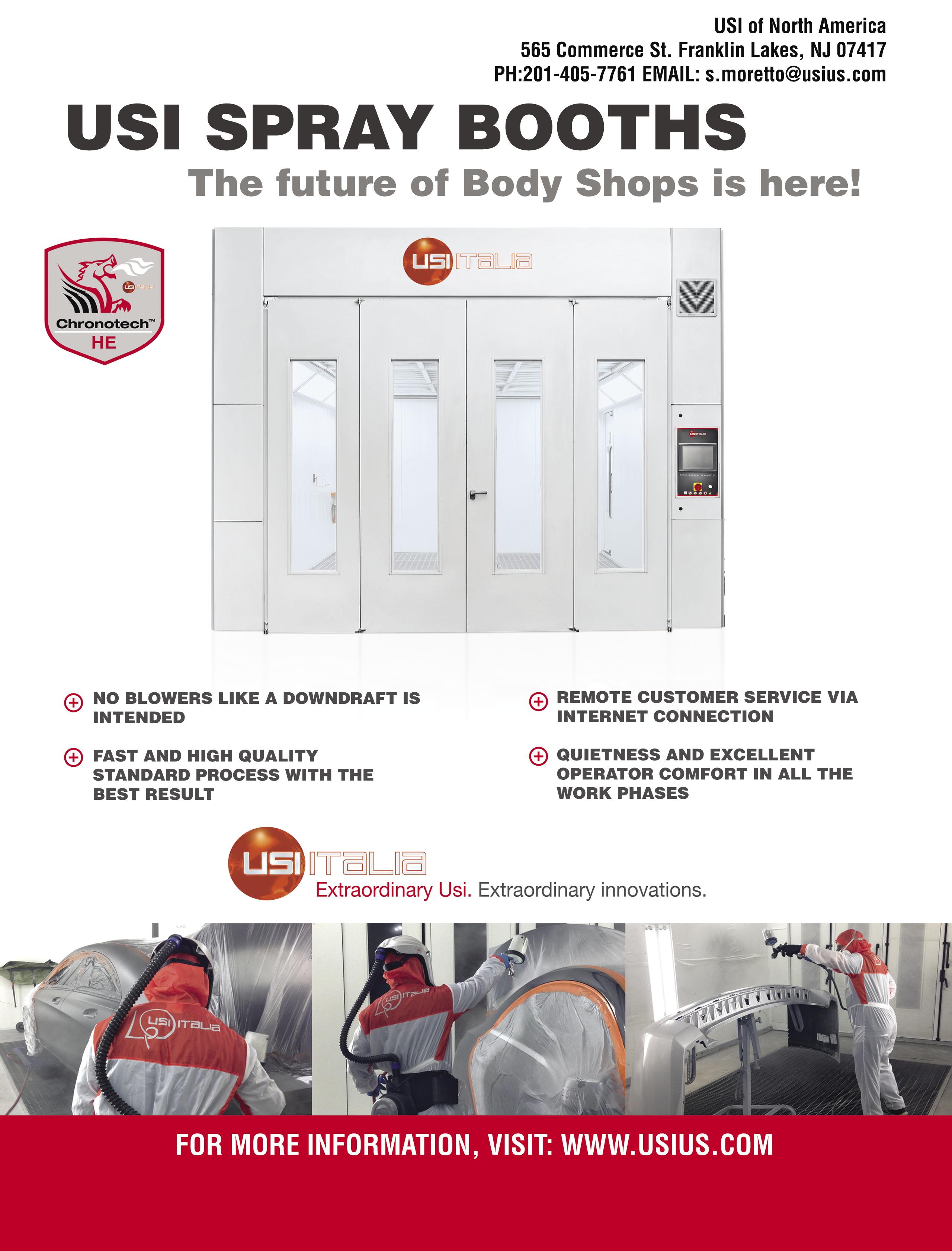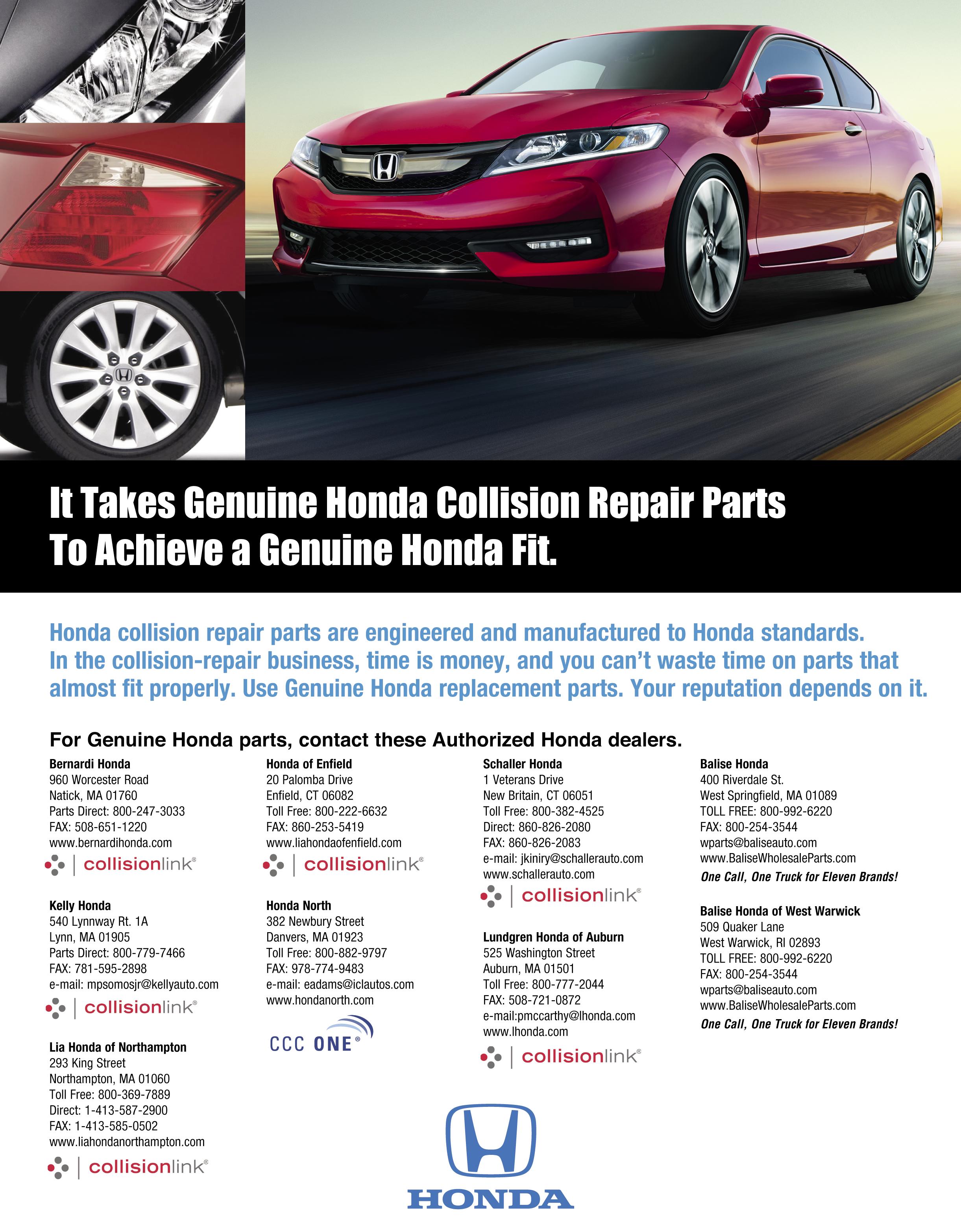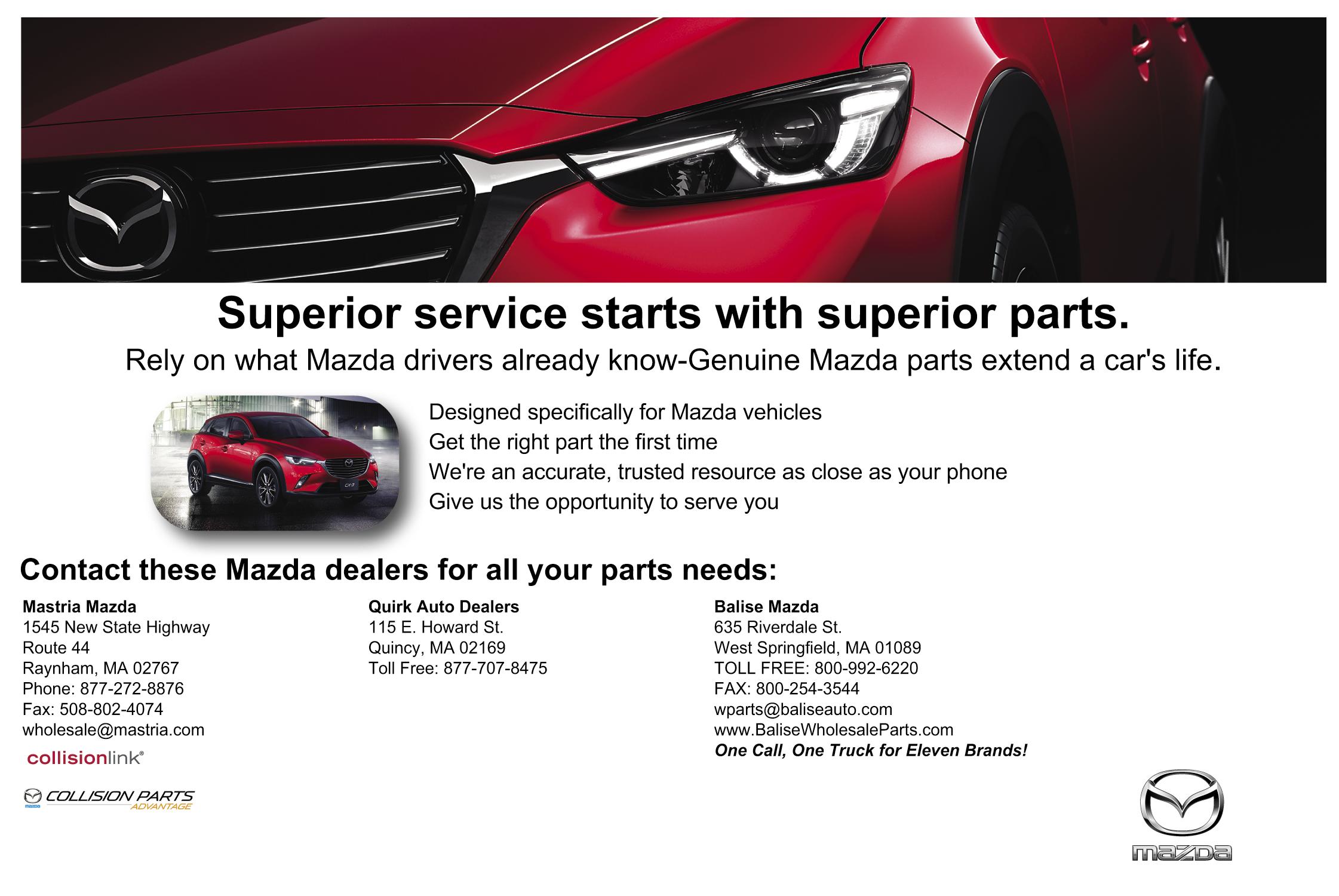
14 minute read
AASP/MA VENDOR AFFINITY PROGRAM SPONSORS


RE-THINKING ADAS:
A Closer Look at a Consumer-Safety Necessity

As active AASP/MA members and regular readers of New England Automotive Report know, the association is working hard to promote legislation that would ensure that Massachusetts consumers receive a proper rate of reimbursement from insurers to have their vehicles repaired in a matter that meets the demands of evolving automotive technologies. For a clear example of this undeniable need, one simply has to consider the points driven home throughout a recent AASP/MA virtual presentation on the increasingly complex world of advanced driver-assistance systems (ADAS).
As part of its recent General Membership Meeting, the association welcomed Nick Dominato, founder of AASP/MA Gold-level Vendor Affinity Program (VAP) participant adasThink and senior vice president of asTech, for an intriguing overview of the growth of ADAS in recent years, where automakers are going with these systems and what repairers need to do to stay ahead of these developments to ensure consumer safety.
Based on the “thousands and thousands of estimates” that he has reviewed through his work with adasThink, Dominato stressed that ADAS calibrations are now an unavoidable component of the collision repair process.
“Overall, we have found a 64 percent calibration-to-estimate ratio. That means that if you run 100 vehicles through adasThink, you will find 64 ADAS calibrations. If you run 10 estimates through, we’re going to find six ADAS calibrations on average in that estimate. As a shop owner/operator, it would be a good exercise to think about how often you’re seeing it now in your

shop. Are you finding the numbers we’re finding? If not, why not?”
According to Dominato, the frequency of ADAS calibrations varies by OEM. For example, Lincoln has on average one calibration for every estimate run through adasThink’s system, and luxury brands generally tend to have more ADAS technology in place, which means more calibrations. However, he cautioned AASP/MA members not to make assumptions based on make and model alone.
To fully illustrate how crucial proper ADAS procedures have become, he shared that late-model Toyota/ Lexus and Ford/Lincoln vehicles require “a huge amount” of parking sensor calibrations.
“Essentially, if you have a Ford or Lincoln or a late-model Toyota or Lexus with parking sensors and you’re doing something as simple as R&Iing the front or rear bumper covers and that has a parking sensor, you’re more than likely going to need to do a calibration for Toyota/Lexus or an operation check for Ford/Lincoln.”
Additionally, he noted that ADAS calibrations aren’t just needed for newer vehicles and could be required for several past model years depending on the manufacturer.
To gauge how quickly the industry is waking up to these realities, adasThink recently examined 100 estimates in Canada (where the company is based) that it knew needed at least one ADAS calibration. Of these 100 estimates (which required a total of 122 ADAS calibrations), only 15 calibration procedures in total were identified. Clearly, a greater focus on these procedures – and a stricter adherence of OEM service information – is needed.
As repair facilities work to access the ADAS information, Dominato cautioned that traditional estimating systems often lack everything needed to identify and implement proper procedures. He also advised attendees to avoid relying solely on scan tools.
“If you use a scan tool, it will also miss more than nine in 10 calibrations. If you come away with nothing from this presentation but one thing, it is do not rely on a scan tool to tell you whether or not an ADAS needs to be calibrated. A pre- or post-repair scan with ‘no codes’ is not an all-clear.”
Ultimately, all roads lead to OEM service information – which can be updated/changed with great frequency – as the definitive ADAS resource for repairers. It will take great diligence and expertise for a professional auto body facility to keep up with what is necessary for ADAS procedures with every vehicle that arrives in its bay. This demand will only increase as OEMs place more emphasis on these systems moving forward.
“As we move toward autonomous driving, the OEMs are going to be a lot stricter about making sure that these systems are properly functioning and are being properly calibrated,” Dominato said. “ADAS is already big, and it’s only going to get bigger.” adasThink’s estimate intelligence software enables users to upload estimates to a system that automatically supplies them with the vehicle’s ADAS feature information, the calibrations that are needed and a link to the OEM service information and requirements for a proper repair. To check out adasThink for free, create an account at adasthink.com to try 10 estimates and obtain more information. A spotlight on adasThink’s services is available in our April 2021 issue.



Last month’s Legal Perspective dealt with the issue of whether the referral shop contracts used by insurers are legal. Clauses that appear to violate various statutes or regulations were identified, and it was suggested that collision repair shops that participate in insurer referral programs carefully read each insurer’s contract. At the end of the article, it was noted that there may be a bigger issue regarding specialized insurer referral shop programs: Are they legal at all?
Background
For many years, the ability of insurers to steer their insureds to particular auto repair facilities was greatly limited. When the statute establishing the Auto Damage Appraiser Licensing Board (ADALB) was enacted in 1981, it included language stating that “no appraiser or insurer shall request or suggest that repairs be made in a specified repair shop.” That was amplified by regulations that the ADALB adopted soon afterwards, which stated that “no staff or independent appraiser, insurer, representative of insurer or employer of an independent appraiser shall refer the claimant to or away from any specific repair shop or require that repairs be made by a specific repair shop or individual.”
The statute and the regulations were generally interpreted so as to completely prohibit auto insurers in Massachusetts from communicating any preference as to what repair facility or facilities their insureds should use to make insurance covered auto damage repairs. That interpretation was softened somewhat in 1987, when Allstate Insurance Company sued the ADALB, challenging such a complete prohibition. In that case, the Massachusetts Supreme Court ruled that “an insurer, on the request of a customer, may provide that customer with a list of repair shops or individuals which it believes can do quality repair work as long as the communication makes it clear that the choice of the repair shop or individual belongs to the customer.” Still, the limitation on referrals remained significant, since the ruling required that the customer first make a request to the insurer. Additionally, it required the insurer to provide a list of shops rather than directing a claimant to a specific shop and make it clear to the customer that they still had a choice of whatever repair shop that they wanted to use. Also, as part of its decision, the Court let it be known that it was not striking down either the governing statute or the ADALB regulation as they were written.
The Major Change
In the late 1980s, the insurance industry lobbied for, and was able to convince the Massachusetts legislature to enact, the so-called “Direct Payment” statute. That law completely changed the way that insured auto damage claims were handled in Massachusetts. Among the changes was a portion of the statute that would allow auto insurers that adopted “Direct Payment Plans” to distribute lists of referral repair shops to their insureds when those insureds were making damage claims.
Despite this major change, there still continued to be significant limits on how the referral shop system would work.
Notably, except as specifically allowed in the Direct Payment regulations, the general referral prohibitions existing in the original ADALB statute and the ADALB regulations remained
intact – and they are still intact. Referrals could be made by insurers only if they adopted a Direct Payment Plan, and only
if they complied with regulations subsequently issued by the Commissioner of Insurance that prescribed how such Direct
Payment Plans and referral programs would work.
Among requirements of the Direct Payment regulations are: (1) All Direct Payment Plans need to be approved by the Commissioner of Insurance. The insurance industry can submit an “industry” plan that, if approved, then can be used by any electing insurer. Alternatively, an individual insurer can submit its own plan. (2) In order to be approved, there must be a hearing held with regard to most plans. The submitter of the plan (whether the industry or an individual insurer)“and other persons affected” need to be given notice of the hearing. Further, the submitter “and any other interested person” can file written materials in support of or in opposition to the plan. [Emphasis added.] If the Commissioner determines that a submitted plan “does not substantially deviate from a previously approved plan,” then it can be approved without a hearing. [Emphasis added.] (3) All plans must include a referral repair shop component. (4) “No direct payment plan approved […] and no insurer in
implementing such plan, shall require a claimant to have repairs
made at any specific repair shop.” [Emphasis added.] (5) The plan must contain a provision that an insurer must provide to a claimant a list of all Massachusetts-registered motor vehicle damage repair shops (later interpreted by the Commissioner to just all registered shops in the claimant’s county). “The insurer may indicate by clearly marking with an asterisk or other means of highlighting on the list of all registered repair shops at least five repair shops geographically convenient for the claimant which will perform the repairs on referred claims without undue delay.
An insurer shall not provide a separate list containing only its

THEY’RE CALLED “ORIGINAL BMW PARTS” FOR GOOD REASON.

FOR UNCOMPROMISING PRECISION AND INCOMPARABLE QUALITY, YOUR BMW CENTER ISYOUR ONE-STOP SHOP FOR EVERYTHING BMW.
For Original BMW Parts, contact one of these authorized BMW centers:
BMW of West Springfield
1712 Riverdale St. West Springfield, MA 01089 PH: 413-746-1722 FAX: 413-304-9009 bmwwestspringfield.com
New Country BMW
1 Weston Park Ave. Hartford, CT 06120 PH: 860-240-7881 FAX: 860-240-7873 newcountrybmw.com
BMW of Stratham
71 Portsmouth Avenue Stratham, NH 03885 PH: 603-772-0000 FAX: 603-772-9436 bmwofstratham.com
BMW of Warwick
1515 Bald Hill Rd. Warwick, RI 02886 PH: 401-821-1510 FAX: 401-823-0530 bmwofwarwick.com
Tulley BMW of Nashua
147 Daniel Webster Hwy Nashua NH 03060 PH: 603-888-5050 FAX: 603-888-8427 tulleybmw.com
continued from pg. 8
What ensued next was the shameful manipulation of the voting process under Robert’s Rules regarding parliamentary procedure. After much discussion, the motion was moved to a vote. The vote was 2-to1 in favor, with one abstention by insurance representative Samantha Tracy – meaning the motion would have passed. After what in my opinion sounded like coaching going on in the background by Attorney Michael Powers, Chairman Michael Donovan voted in the negative – causing a tie – and the motion failed. A second motion was requested by the Chairman after leading comments by Smith that the restrictions be lifted on May 15 rather than immediately as previously considered. This motion passed on a 3-to-0 vote, with Tracy once again abstaining. (It should be noted in this instance that the Chairman did not vote – and he didn’t have to, as the insurance industry got its way again!)
One has to question why Tracy abstained once again. Did she perhaps do so in both instances as a silent protest to the proceedings? Could it be that she is well aware of the consequences of supporting the collision industry on a vote? History bears witness as to what happens when you do.
In December 2018, all five ADALB members indicated they would vote in favor of a collision repairer on the issue of a vendor not selling aftermarket parts to them. In January 2019, longtime ADALB member Joe Coyne was replaced by Tracy (unlicensed at the time). At the next ADALB meeting held that April, decades-long Chairman Gilbert Cox and fellow Board member Lyle Pare were replaced by the current chairman (Donovan) and MAPFRE employee Smith.
Some will say that I am voicing sour grapes because the collision industry did not get a vote to go its way. I would dare say that since this current Board has been seated, there

has been the subtle – or maybe not so subtle – manipulation of parliamentary rule to benefit the insurance industry. I give kudos to the use of Robert’s Rules to gain the advantage. However, it just proves the point that there are three individuals on the ADALB hell-bent to advance the insurance industry’s agenda and not protect consumers by ignoring the regulations! The Chairman, from the first vote he was able to participate in when appointed, was raising his hand in the affirmative before a motion was even made (on a video record, by the way).
To add insult to injury in this most recent meeting, two subsequent votes that took place once again exemplified the unfair and biased influence being exerted by the insurance industry on the Chairman, who is supposed to be impartial and not beholden to either the collision or insurance industries. Either through a lack of understanding of the regulations and the need to protect consumers or through an intent to benefit insurers, this Chairman seems to go along to get along. In my view, the facts speak for themselves. His continued platitudes and promotion of the ideas as set forth by Smith speak volumes. His apparent lack of understanding of the Direct Payment Plan (DPP) regulations allowed for another miscarriage of a vote defying the language of regulations that have been in effect since the Automobile Insurance Reform Act of 1988 was passed. I think he allowed himself to be swayed (if his mind had not been set from the start) regarding the requirements of receipts as proof of parts being purchased and work being done. I also think he was led by what I feel was the intentional misrepresentation of facts and concerns voiced by Smith regarding the DPP regulations.
It is very apparent that the insurers (as the saying goes) want to have their cake and eat it, too. They want the ability to pick and choose what suits their needs. The requirements under the old system (pre-1988) using the Work Completed Form (WCF) allowed the insurer to demand all receipts as proof and then make the subsequent payment of a claim – the old “you only get paid for what you prove you did” process. Under the DPP regulations, the insured is owed all the money for their damages whether they repair their vehicle or not. If the insured chooses to repair their vehicle, they get to dictate what is or isn’t done. Insurers are trying to create a hybrid that suits their greedy needs. First, they write low-balled and fraudulent original estimates and then insist on paying for only what is negotiated AND COMPLETED on a supplement. It is an absolute
abomination!
This is an extremely important issue for consumers and collision repairers alike. THIS IS WHY OUR LEGISLATION TO MOVE THE ADALB TO THE DPL IS A MUST! There is no better reason to contact your legislator and request their support of House Bill 327, “An Act Relative to the Licensure of Appraisers,” than what took place at the last ADALB meeting. If you are an AASP/MA member, you have access to all ADALB proceedings via video recordings on our website. You owe it to yourself to watch. If you do not walk away after having viewed the videos as infuriated as the rest of us, you need to check for a heartbeat.
This is just one of the fights AASP/ MA is waging on your behalf. If you are not a member, there is no better time than the present to join. There is an application on page 7. DO IT NOW! WHAT MORE PROOF DO YOU NEED? The time to act is now.
PROTECTING CONSUMERS AND THE COLLISION INDUSTRY
MASSACHUSETTS
AASP/MA EXECUTIVE DIRECTOR EVANGELOS “LUCKY” PAPAGEORG
can be reached at (617) 574-0741 or lucky@aaspma.org.









